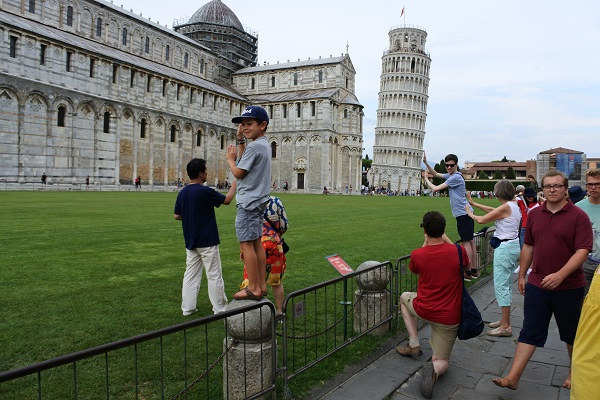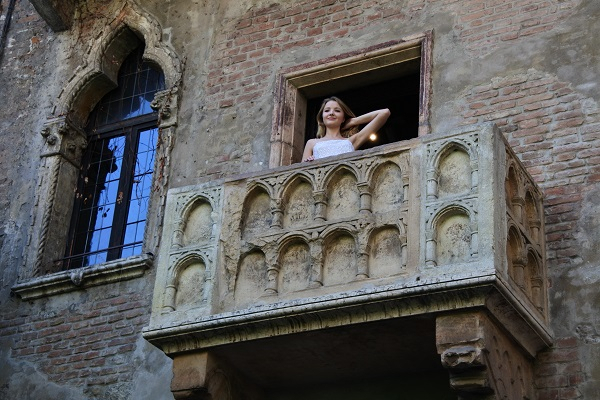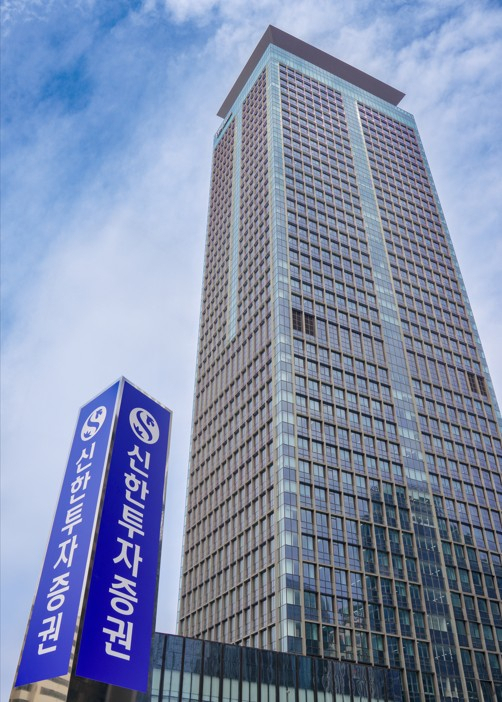

Italia is the source of Western culture. As the birthplace of Roman Empire, Italians spread their culture throughout the Western countries. Between the 14th and 16th centuries, they did attempt to revive the long-lost culture of ancient Rome and Greece. Italians are those who never forget their pride and superiority of their culture's root even after thousands of years had passed.
Their culture is highly appreciated for its magnificence and outstanding artistry. The original conditions of Roman cultural artworks are well preserved for thousands of years due to the climate. Except for rainy season in winter, it does not rain in Italy during the whole year, which hardly causes natural damage to cultural assets. Also, Italian culture of stone and marble has kept the assets in excellent preservation.
The public awareness of the history itself is also evident. If there is a cultural asset, Italians are willing to accept inconvenience and strive to protect it. In any cities in Italy, people still live in the houses that are more than hundred years old. The historical consciousness that precedes the pursuit of convenience has created the powerful Italy that holds world's greatest heritages.
◆The Background of Shakespeare's novel "Romeo and Juliet," Verona
Verona is the city where culture from ancient times through the Middle Ages to the Renaissance era remains intact. It was designated as a UNESCO World Heritage Site in 2000. It is also the background of Shakespeare's novel "Romeo and Juliet." In fact, Shakespeare never visited Verona when he was writing the novel, but no one in Verona says "Romeo and Juliet" is "fake."
The most popular attraction in Verona is the 'House of Juliet' (casa di Giulietta). From the foyer of the house, the entire wall is covered with the love messages written by people from all over the world. The confessions of love expressed in different languages have created uniqueness. There is a legend saying that "if one touches the right breast of Juliet's statue standing in the middle of the garden, one will find the love of their life." Because of this, only the right breast of the statue glows exceptionally and has been the spotlight.
The house of Juliet has a balcony which Romeo used to climb to meet her, but no one would dare to stand on the balcony unless you are beautiful. It is because as soon as someone stands on the balcony, tourists madly flash the camera shutters.
There is also Piazza Erbe, a traditional market square where Romeo and Juliet used to go. Street stalls sell a variety of local food and souvenirs.
Another popular attraction is Arena Di Verona Festival. It is held every year from June to September at the ancient Roman amphitheater called Arena di Verona. The first operas were performed on August 10, 1913, to celebrate the 100th anniversary of Verdi's birth. A variety of operas have been performed such as the works of Giuseppe Verdi, Giacomo Puccini, and Gioacchino Antonio Rossini, the most-prominent Italian opera composers. During the festival, you will see many street artists in every nook and corner of the street.
◆Leaning Tower of Pisa and Pompeii
The Tower of Pisa is one of 'the Seven Wonders of the World.' When you go to the Piazza del Duomo, the leaning tower will make your hair stand on end. The tower of Pisa was first constructed in 1173, and the construction was suspended due to subsidence.
Then it was completed in 1350 but has tilted gradually every year since then. The Experts say that the Tower of Pisa will soon collapse. For this reason, the Italian government supports the tower by using various type of equipment and prevents the tourists from touching the tower directly.
The number of tourists has dramatically increased every year because the Leaning Tower of Pisa might collapse anytime and tourists may not see the original tower anymore. Nonetheless, tourists visit the town to take pictures in a posture supporting the falling tower. Pisa is a tiny rural village in Italy which has a tower as the only tourist attraction.
Pompeii, which had flourished commerce using the seaway in the 5th century BC, is the city that had disappeared with the eruption of Le Vesuve volcano in August 79 AD. The rediscovery of Pompeii in the middle of the 18th century caused the fact that the original forms laid beneath of the city had been preserved more than a millennium.
The ancient Greek domestic buildings remained intact, and the luxurious Roman villas with mosaics in the early Rome Empire were all well preserved. The distinctive aqueducts and public baths supported the development of their society.
However, the city also revealed the past which historians wanted to conceal. Husbands who had sailed for a few days before returning to their home stopped in the prostitute quarters to enjoy sexual pleasure. The mural paintings show that the people had made love with not only the opposite gender but also with the same gender and even the animals. Most excavated relics related to this are kept in the museum's repository because promiscuous sex life may leave a blot in the Renaissance culture which seeks the reconstruction of ancient Greek and Roman culture.
◆'Florence,' the Center of the Renaissance
Firenze (Florence) is the center of the Italian Renaissance in the 14th and 15th centuries. There are masterpieces made by artists such as Leonardo da Vinci, Michelangelo, and Botticelli throughout the city. When describing Florence, this particular family should be mentioned. That is, the Medici family. They were a typical middle-class family, who accumulated wealth in banks and grew to be the most prestigious family.
Between 1400 and 1748, the family dominated the city of Firenze for nearly 350 years. They also produced Popes through marriage between family circles and enjoyed the absolute power. Afterwards, on the strength given by the Vatican, the Medici expanded their business across Europe and entered politics. However, they continued to make the marriage relationship with the royal family of the neighboring countries to achieve a higher social status because they did not come from a noble family. In this process, property-related feud never stopped within the country, and the Medici family finally disappeared into history as they fed poison to the women to prevent bearing future generations.
Nevertheless, the Medici family that has been well known to and respected by everybody has further developed the European artistic circles by supporting the world-renowned artists financially. The family's finance and the artists' ability have created beautiful artworks throughout Italy. Furthermore, they played an active part in various fields, which led to the flow of a new culture. This art's spirit and craftsmanship have sustained in Firenze.
Today, Firenze is famous for its leather. There are many leather master craftsmen making leather goods for generations due to the developed business region in the past. Leather shops sell a variety of leather products ranging from high-end to everyday living goods. The characteristic of leather shops in Firenze is re-sizing every single product to fit the person purchasing. For this reason, each store has leather craftsmen, and they handcraft your goods right in front of your eyes. You can have a unique experience on Italian leather craftsmanship.





































댓글 많은 뉴스
장동혁 대표 체제 힘 실은 TK 의원들
국힘 지지층 80% 장동혁 '당대표 유지'…중도는 '사퇴' 50.8%
李대통령, 이학재 겨냥? "그럼 '사랑과 전쟁'은 바람피는 법 가르치나"
장동혁 "당명 바꿀 수도"…의원 50여명 만나며 '쇄신 드라이브'
한동훈 "김종혁 징계? 차라리 날 찍어내라…우스운 당 만들어"